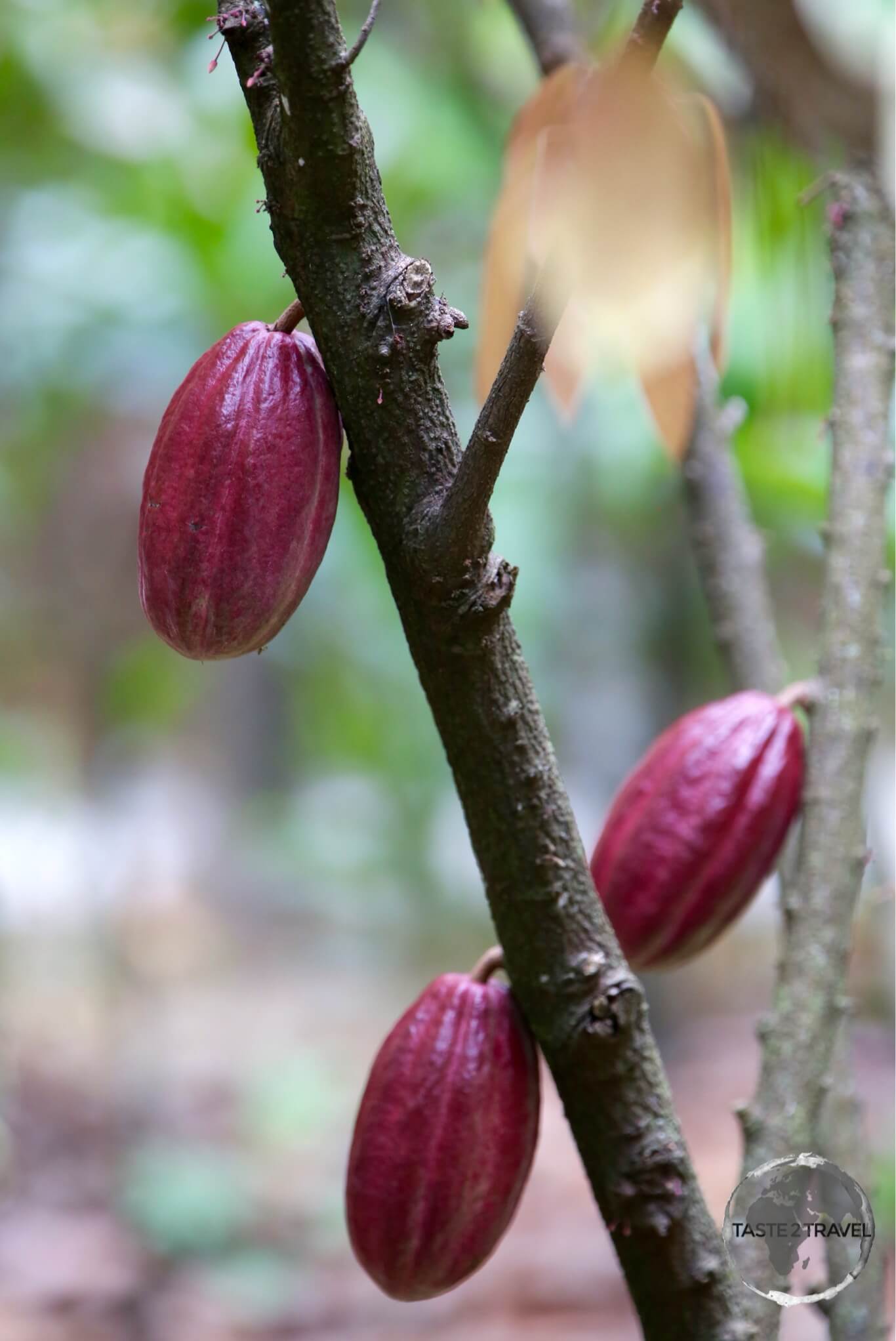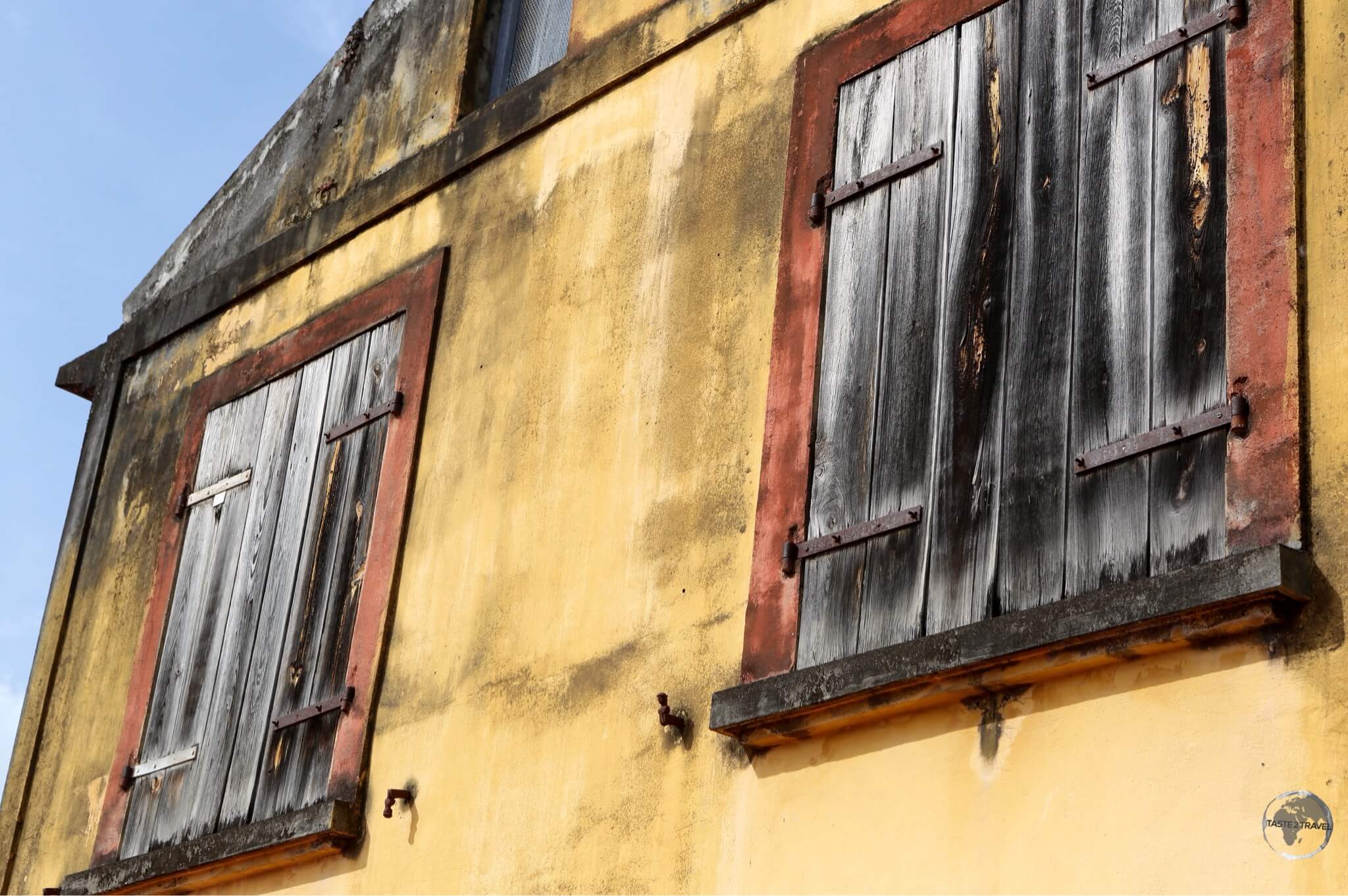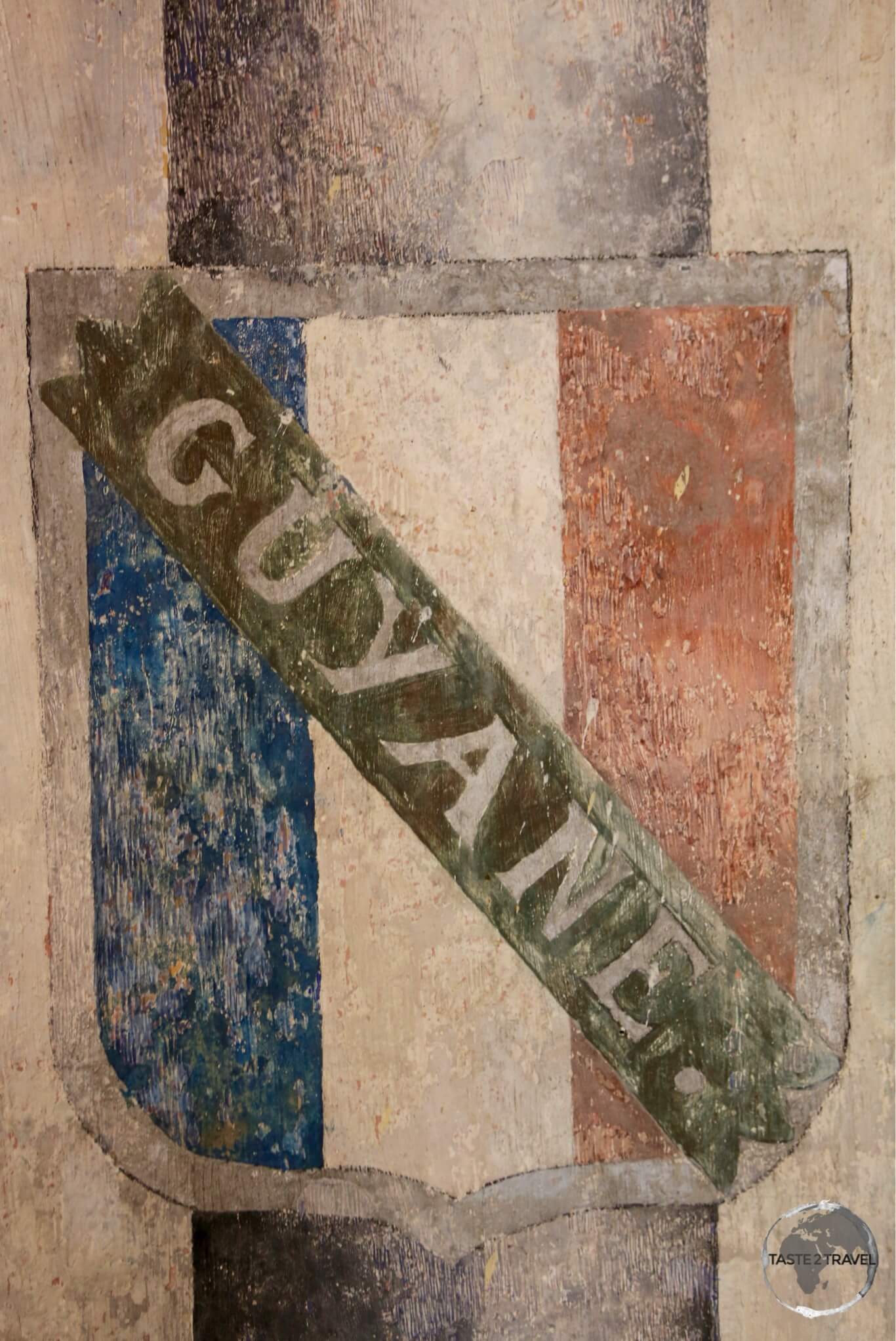Guadeloupe Travel Guide
Welcome to the taste2travel Guadeloupe Travel Guide!
Date Visited: April 2015
Introduction
Resembling a butterfly, Guadeloupe is comprised of two very different islands, separated by a narrow channel – the Salée River. To the west (left wing) lies Basse-Terre – a mountainous, volcanic island. To the east (right wing) lies Grande-Terre – a flat piece of raised limestone sea bed.

Guadeloupe National Park.
Part of the Lesser Antilles, Guadeloupe is located north of Dominica, south of Antigua & Barbuda and south-east of Montserrat. A regular ferry service connects Guadeloupe to Dominica, Martinique and St. Lucia. For more on this, see the ‘Getting There‘ section below.
Location
As with Martinique to the south, Guadeloupe is an overseas department of France and if you are arriving from one of the neighbouring Anglo-Caribbean islands you will notice a big difference in the standard of living – all thanks to generous French subsidies.
History
Like neighbouring islands, the original settlers on Guadeloupe were the native Arawak Indians, who arrived from modern day Venezuela. They were eventually replaced by the more aggressive Carib Indians.
Christopher Columbus made landfall here on his second voyage to the Americas in November 1493. He named the island Santa María de Guadalupe de Extremadura, after the image of the Virgin Mary venerated at the Spanish monastery in Guadalupe, a monastery he had once visited. As with other neighbouring islands, the Caribs were strong defenders of their land so the Spanish never settled on the island.
However in 1635, French explorers landed on the island and decided it would be a good place to grow tobacco. A French trading company sent a small army of men (550) to the island to wage battle against the Carib Indians. The war lasted 3 years but eventually the French gained control of the island.
In addition to tobacco, sugar plantations were also established. In its heyday, Guadeloupe produced more sugar than all the British islands combined. Slave labour was imported from West Africa to work on the plantations. The population of Guadeloupe today is 410,335, mainly comprised of descendants of the slaves. After slavery was abolished, indentured labourers were imported from India.
At one stage Britain held control of the island but traded it for Canada during the Treaty of Paris.

Cactus on Basse-Terre.
Today tourism is a key industry, with 83% of tourists being French. English is not widely spoken on the island, so a little français speaking ability is useful.
Sightseeing
Around Basse-Terre
Deshaies
Located on the north-west coast of Basse-Terre, Deshaies is home to some fine sandy beaches, including Leroux beach, Petit Anse and Grand Anse.
Grand Anse provides a magnificent stretch of golden sand, gorgeous water and shady palm trees. Parking on the weekend can be a nightmare.
Pointe-Noire

Cocoa tree at La Maison du Cacao.
On the highway in Pointe-Noire you will find La Maison du Cacao. Here you can walk around a small trail where you learn about the history of cacao. At the end of the trail is a visitor’s centre where enthusiastic guides provide a presentation (in French) on cacao and the chocolate making process. During the presentation you get to try different types of chocolate and tropical fruits.

Cacao beans at the Maison du Cacao.
Pigeon Island
Pigeon Island is a gem! So much so, it has been designated the Cousteau Marine Park and a bust of the famous commander has been installed in a Coral Garden at a depth of 12-m. It is considered one of the best dive sites in the Caribbean.
The coral reef and fauna are in excellent condition and the sea life is abundant. There are impressive slopes on either side of the island which drop down to 40-60 metres. Another added bonus is the close proximity to the mainland – a 5-minute boat ride away.
There are plenty of dive operators located around adjacent Malendure Beach. I did a dive with Les Heures Saines (English spoken), who I would recommend.
Guadeloupe National Park

Cascade aux Ecrevisses are a highlight of the Guadeloupe National Park.
A highlight of Basse-terre, the Guadeloupe National Park is heaven for those who like to hike. The park occupies a huge chunk of the centre of this mountainous island and can be easily accessed via the islands’ main traverse road (route D23).
A nice hike is to the Cascade aux Ecrevisses, which can be reached via a short hiking trail from the main road. There is a visitors centre at the trail-head, which provides information about the flora and fauna of the park.
Walking trails are clearly marked but you should ensure you are wearing proper footwear – not a place for your Havaianas. The swimming here is refreshing – a great place to relax and cool off.
Vieux Habitants

Coffee beans for sale at Cafe Chaulet, Basse-Terre.
If you are passing through the town of Vieux Habitants and are in need of a caffeine fix, you could do worse than stop by Cafe Chaulet.
Here you can visit a small museum, which provides a history of coffee production on the island. You can taste their coffee (very nice) but there is a charge for this (not very nice). There is a gift shop selling all types of over-priced souvenirs and of course you can purchase their coffee.
Overall this place is a tourist trap and not worth going out of your way for but if you are passing through it’s worth 5-minutes of your time.
Around Grande-Terre
Unlike neighbouring Basse-Terre, Grande-Terre (which, despite its name, is actually smaller than Basse-Terre) is a huge slab of raised limestone sea floor. As such it is flatter and offers lots of powdery white sandy beaches, especially along the south coast.
St. Anne
Located on the south coast, St. Anne beach is absolutely wonderful, however everyone on the island knows this so it can get crowded. Parking can be difficult but worth the effort. You will be rewarded with powdery white sand and turquoise swimming water. There are lots of cafes and restaurants where you can refuel.
Accommodation

Deluxe tree-house accommodation at Habitation Getz.
You will find accommodation options scattered around both islands. Depending on the type of holiday you desire, you should base yourself either on Basse-Terre (nature, hiking, snorkeling, diving, beaches) or Grande-Terre (beaches).
I stayed in a tree house at Habitation Getz, located near the town of Vieux Habitants on the west coast of Basse-Terre. This charming, historic guest house offers accommodation in three different deluxe tree houses or the main house.
There are lots of accommodation options for all budgets available on booking.com
Eating Out
The cuisine of Guadeloupe features a mix of Creole and French influences. The island has a reputation for serving some of the best food in the Caribbean.
You will find plenty of restaurants specialising in French-Creole cuisine and international dishes. Seafood is popular and appears on most menus along with curry dishes.
Like the neighbouring Anglo-islands, Calaloo soup (a leafy vegetable similar to spinach) is a local favourite as a starter.
Visa Requirements
Some nationalities require visas for Guadeloupe – check your visa requirements prior to arrival.
Getting There
By Air
International flights arrive at the busy Pointe-à-Pitre International Airport, located 3-km north-east of Pointe-à-Pitre. The airport is the main hub for Air Caraïbes and Air Antilles Express.
The following airlines provide international connections:
- Air Antilles Express – services to Antigua, Dominica (Douglas–Charles), Dominican Republic (Santo Domingo) Martinique, Puerto Rico, Saint Barthélemy, Sint Maarten
- Air Canada – services to Montréal (Trudeau)
- Air Caraïbes – services to Dominican Republic (Santo Domingo) Martinique, Paris (Orly), Saint Lucia (Vigie), Saint Martin, Sint Maarten
- Air France – services to French Guiana, Martinique, Miami, Paris (Orly), Haiti (Port-au-Prince)
- American Airlines – services to Miami
- American Eagle – services to Miami
- Corsair International – services to Paris (Orly)
- Cubana De Aviacion – services to La Havana
- LIAT – services to Antigua, Barbados, Dominica (Douglas–Charles)
- Seaborne Airlines – services to Puerto Rico
- Winair – services to Dominica (Douglas–Charles)
- XL Airways – services to Paris (Charles de Gaulle)
By Sea
There is a scheduled ferry service connecting Guadeloupe with Dominica, Martinique and St. Lucia. The ferry terminal is located in downtown Pointe-à-Pitre. The service is operated by the Guadeloupe based Express-des-Iles. Check their website for schedules and fares.
Getting Around
With almost 2,000-km of roads, the road network on Guadeloupe is extensive and well-maintained with multi-lane freeways on both Basse-terre and Grande-terre. Roads are well signed so you’ll never get lost.
There is a comprehensive bus network on the island, with most routes originating from Pointe-à-Pitre.
Taxis are also available.
The best option for exploring the two islands is to hire a car upon arrival at the airport. Unlike the neighbouring Anglo-islands, car rental on Guadeloupe is cheap. All of the international agents have offices at the airport and they offer large fleets of new French cars. Most cars on the island are manual – not automatic. Unlike the Anglo-islands, the French government does not raise revenue by forcing tourists to purchase a local driver’s license.
Safe Travels!
Darren
Follow me on Instagram:
[instagram-feed feed=1]
Further Reading
Other travel reports from the Caribbean region include:
- Anguilla
- Antigua & Barbuda
- Aruba
- Bahamas
- Barbados
- Bonaire
- Bermuda
- Cayman Islands
- Cuba
- Curaçao
- Dominica
- Dominican Republic
- Grenada
- Guadeloupe
- Haiti
- Jamaica
- Martinique
- Montserrat
- Puerto Rico
- Saba
- Saint Barthélemy (Saint Barts)
- Saint Eustatius (Statia)
- Saint Kitts & Nevis
- Saint Lucia
- Saint Martin/ Sint Maarten
- Saint Vincent & The Grenadines
- Trinidad & Tobago
- Turks & Caicos
- Virgin Islands (British)
- Virgin Islands (U.S.)
Guadeloupe Travel Guide Guadeloupe Travel Guide Guadeloupe Travel Guide Guadeloupe Travel Guide Guadeloupe Travel Guide


































